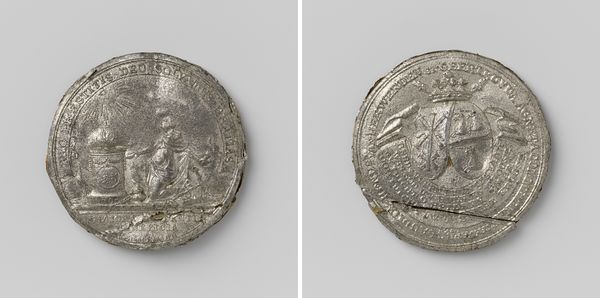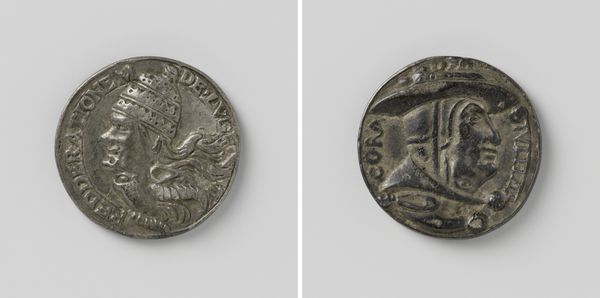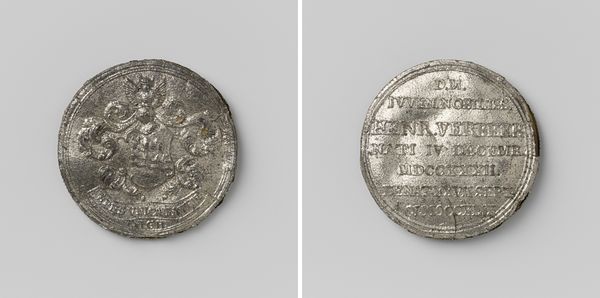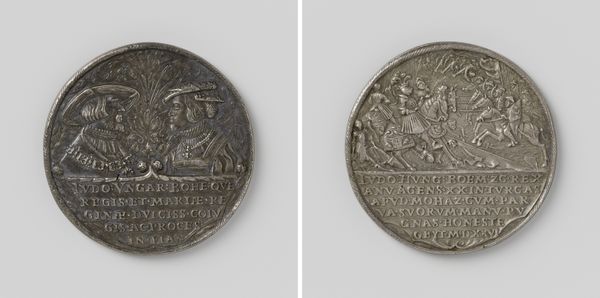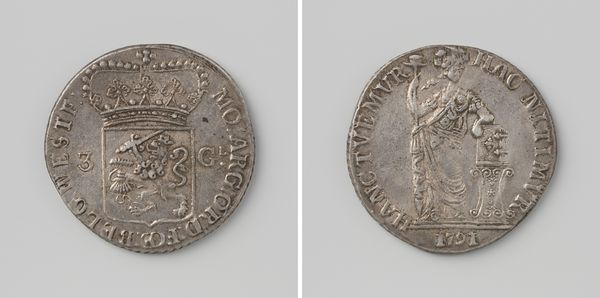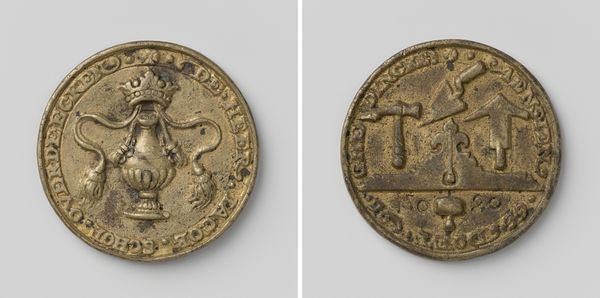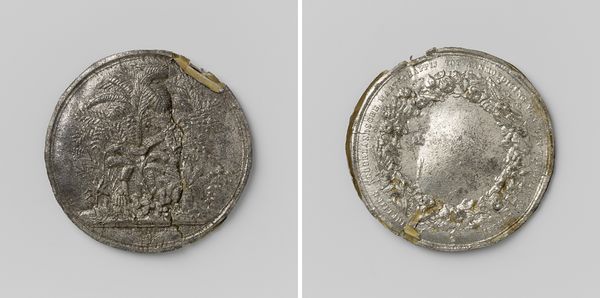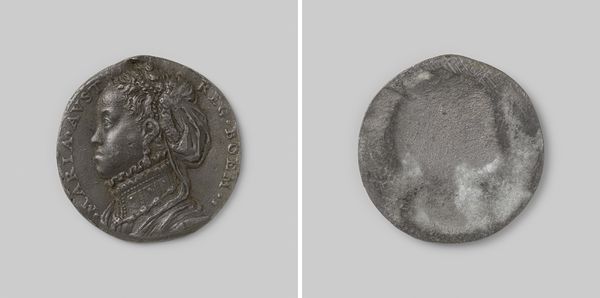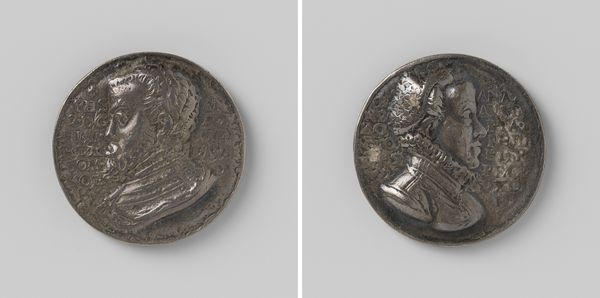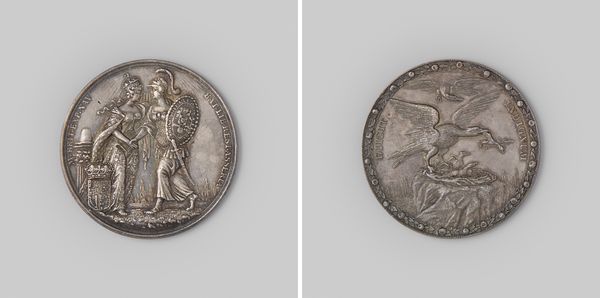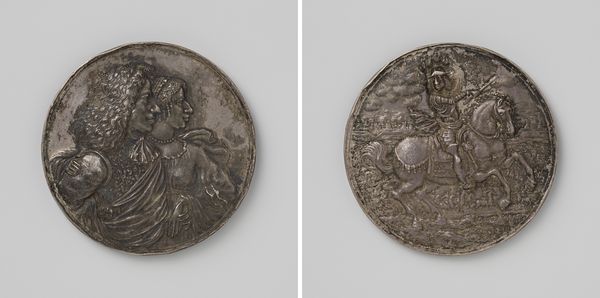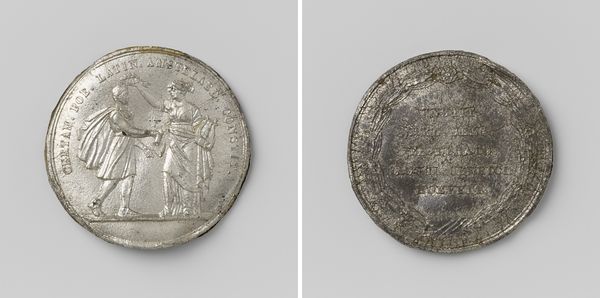
Chirurgijnsgilde te Amsterdam, toegangspenning voor de hortus medicus van Andreas Bonn, professor in de anatomie en de chirurgie 1771
0:00
0:00
Dimensions: diameter 4.2 cm, weight 31.34 gr
Copyright: Rijks Museum: Open Domain
This is a silver admission medal for the Hortus Medicus of Andreas Bonn in Amsterdam. It features a skeleton with a scythe, standing beside an hourglass on one side, and a vase of flowers with the inscription ‘Hortus Medicus’ on the other. The skeleton, often shown with a scythe, is an age-old symbol of mortality, reminding us of life’s fleeting nature. It appears across cultures, from ancient Greek pottery to medieval morality plays, and its purpose is always the same: to incite contemplation of our inevitable end. The hourglass is a symbol of time passing, each grain of sand representing a second ticking away, further reinforcing the awareness of how brief life is. However, the vase of flowers on the reverse offers a counterpoint. Flowers have long represented life, beauty, and renewal. Here we see the constant tension between life and death, decay and growth. It serves as a visual reminder of the surgeon's work: in the face of death, to cultivate life. This dialectic tension, seen here, echoes through the ages in different forms, reminding us of the human obsession with understanding our temporal existence.
Comments
No comments
Be the first to comment and join the conversation on the ultimate creative platform.
